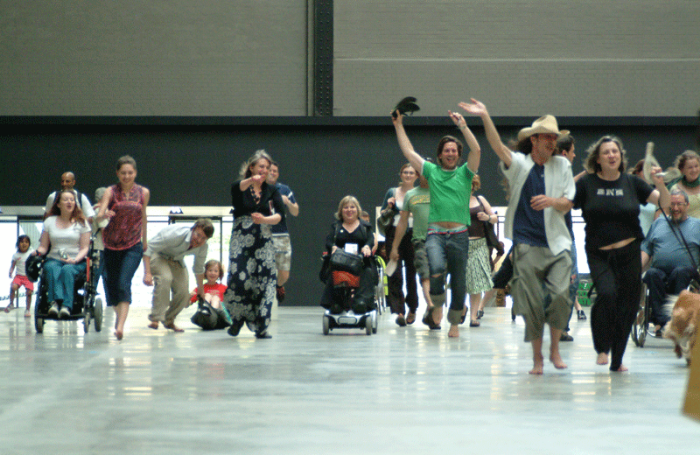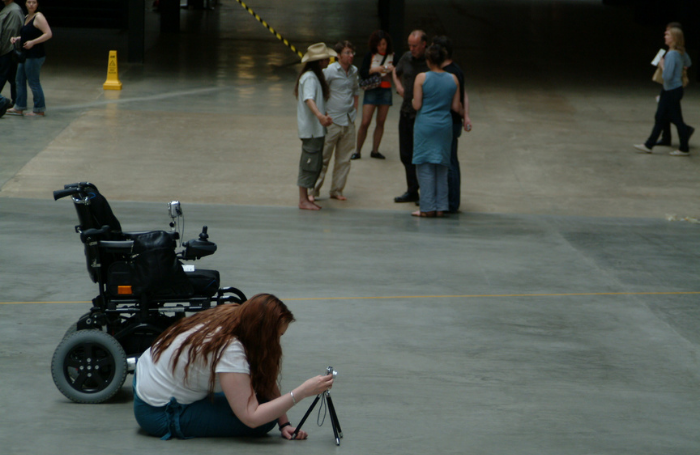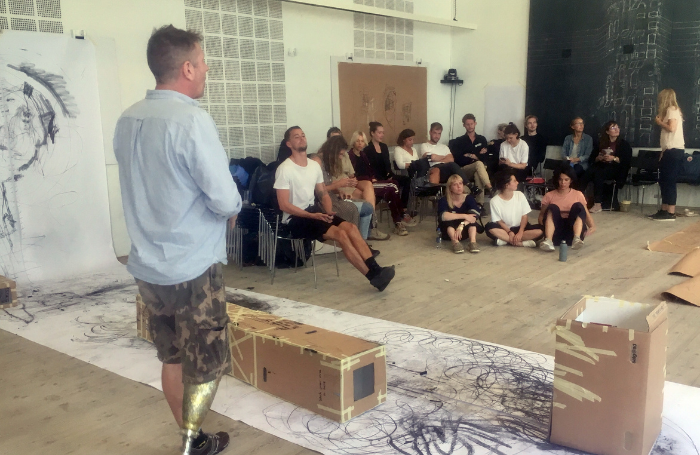DisOrdinary Architecture - Brief for Disabled and Deaf artists residencies
We are looking for partners interested in having a conversation about how a residency in your organisation may benefit both your organisation and our Disabled, Deaf or neurodivergent artists. We aim to approach new concepts from various perspective. The intention is to enhance the design and interventions in inclusive space and support social justice. We are also very interested in capturing the process and using the positive outcomes and good examples as knowledge transfer and learning for other built environment professionals and agencies.

Background
The DisOrdinary Architecture Project starts from the experiences, expertise and creativity of disabled artists. We work through co-partnering and co-design to bring together artists and built environment specialists on an equal footing.
Our collaborations aim to generate creative and critical opportunities that open up innovative new provocations for thinking and doing disability (and ability) differently in architecture and the built environment. By learning lessons from what we do, we aim to become thought leaders in the field, and to influence attitudes and practices as well as the design of our built surroundings.
The DisOrdinary Architecture Project starts from the belief that improving the design of built space is not just about ‘adding’ disabled people to existing environments to better meet their ‘needs’.
It is about starting from difference to expose and challenge underlying attitudes, assumptions and practices that frame disabled people in particular and limited ways, both in everyday life and through the education and practice of architectural and urban design. So, rather than providing yet more inclusive or universal design principles we begin instead by challenging ableist attitudes and practices. We hope this can open up alternative kinds of inventive interventions – towards not just better inclusive design ‘solutions’ but also better understandings of how the ‘normal’ is constructed in everyday life, and how it can be critically and creatively contested, underpinned by a commitment to social and spatial justice for all.

Why?
We have to ask why disability has somehow remained consistently stuck in a non-historical, a-theoretical and, most crucially, seriously under-explored category in relationship to building and urban design practices. It is invisible in both avant-garde and mainstream architectural theories and discourses, just as it has been a persistent absence in critical and cultural theory more generally. Perhaps this illustrates just how deeply disability remains widely avoided, compared to other disadvantaged identities. Unlike gender, race or sexuality – and the feminist, post-colonial and queer studies which underpin associated scholarship and debate – it seems that we assume ‘disability’ to be unable to bring any kind of criticality or creativity to the activity of architecture.
The Brief
Our project brings disabled artists and their practice together through an exploration of contemporary art, overlooking the formal and conceptual richness of practice through difference. To simply ‘Disrupt the design process’ by supporting Disabled, Deaf and Neurodivergent artists to undertake residencies in cultural or academic institutions and architectural practices. It is about starting from difference to expose and challenge underlying attitudes, assumptions and practices that frame disabled people in particular and limited ways, both in everyday life and through the education and practice of architectural and urban design.
Our project intentions are to provide disabled artists with funds to create new work. We are ensuring we capture disabled artists skills and values to share with the built environment sector and establish futures for disabled artists to flourish creatively within these sectors.
This will be achieved by 4 artist residencies investigating the themes of:
1. acoustics and sound - sensorial
2. spatial design and wayfinding – sensorial and mobility
3. lighting and materiality -a sense of fatigue/tiredness/sensory overload;
4. attitudinal barriers of not being welcomed- across disability
In the residencies, disabled artists will agree with their professional partner architecture practice, cultural institution or university the key themes and the process each establishment is interested in. How this will be mapped out to generate outcomes. The artist and organisational lead will map out a series of interventions which includes talks, performance, or visual art, or digital/ Instagram take overs and other outcomes in partnership with their partner. This process will be captured and shared first with the practice but then wider with our overarching aims embedded in to the resources:-
To provide good examples for the built environment sector and arts sector who are refurbishing buildings or generating new build and have budgets to involve disabled artists
To engender a change process and embed creativity at the beginning of all processes
This will be achieved by sharing, collaborating, showcasing, discourse and dialogue and creating new works with RIBA North West and their networks. We will also offer online events and talks, networking opportunities and live performances.
The artists will disrupt the design process through their interventions to open up the conversations about the value and strength of difference. Their presence physical or digital will generate ‘new art’ to challenge and develop discourse. The 4 themes will be investigated with each artist residency
In addition the residencies will produce ten films featuring discussions with tutors, architects and disabled artists examining those themes that interconnect the thread through our project. Ten podcasts will through interviews draw again on the themes of acoustic/lighting/wayfinding and attitude.
Ten written articles, joint initiatives between disabled writers and architectural academics, will be produced with images. Within the practice and residencies new creative works will be created for sharing and transferring knowledge to the built environment sector. All of the content produced will be available as a resource to tell the stories and insights of disabled artists. The intention is to create dialogue about how one size does not fit all and how different approaches can provide spaces we all feel comfortable in.

The project is a continuation of successful briefs we have delivered previously. At the Royal Academy we worked with neurodivergent artists to use and play sound in hard spaces where the acoustics were poor and provide carefully designed seating to make a space feel less sterile and clinical.
We are currently working with Deaf architects and 10 disabled artists in Germany to redesign and build an arts performance pavilion for theatre Formen.
Our basis is to work with disabled artists and disabled architects to show how ‘Disability gain’ and ‘Deaf gain’ broadens creative outcomes and benefits everyone. ‘Disrupted by design’ as a positive tool.
The artists for this project will, with your collaboration, ‘Disrupt the design process’ through dialogue and research with the partner, the exchange of authentic experiences and by challenging the ‘normative’ thinking for design solutions. The project will open up new perspectives and research why acoustics matter in respect of communication for disabled and Deaf people. It will analyse and consider whether, if an environment is designed differently, it can be more welcoming for more communities who are currently excluded.
We know that changing mindsets to include disabled creative professionals is necessary, and non-disabled people seeing disabled people as professionals and in an everyday significant way will make huge in roads to securing paid work for disabled artists.
We are open to discussing this opportunity with you and look forward to having a conversation with practices, cultural institutions and universities in the North West. For further information on the brief, or to express your interest, please contact Zoe Partington at zoe.partington@gmail.com.
Zoe Partington and Jos Boys, Co-Directors, The DisrOdinary Architecture Project.
email: disordinaryarchitecture@gmail.com
To understand more about how disabled artists voices are missing from our future building and placemaking, you can listen to an episode of the Bartlett podcast 'Blocked by Design featuring DisOrdinary Architecture Co-Director Zoe Partington.
The DisOrdinary Architecture Project website features further information on their previous projects and a wealth of resources on doing disability differently.









